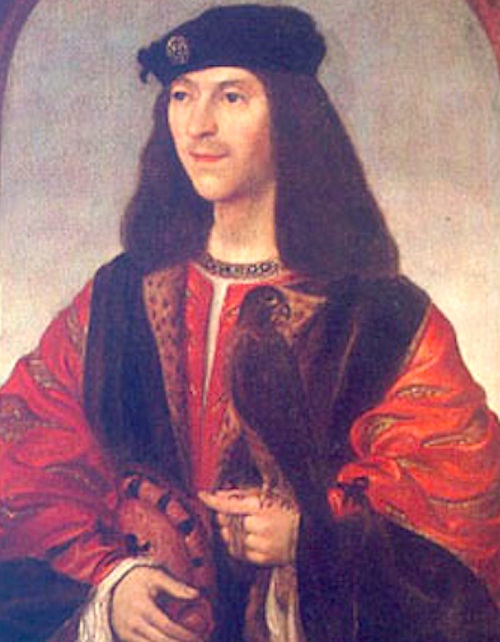A SWORD and dagger belonging to the last Scottish king to die in battle are to return to Scotland for the first time in 500 years.
The sword, dagger and an emerald ring were taken from the body of King James IV after he was defeated by the English at the Battle of Flodden in 1513.
After being passed down through the family of the Earl of Surrey, they were kept at the College of Arms in London.

Now, to mark the 500-year anniversary of the battle, they will be put on display in the Smith Museum in Stirling as pat of a loan.
Campaigners had faced an uphill struggle to return the weapons to Scotland after a report from an expert earlier this year cast doubt on their provenance.
Nevertheless the weapons had huge significance as they are the only physical link to King James IV, the last king to die in battle on the British Isles, as the whereabouts of his body are unknown.
Dr Elspeth King, director of Smith’s museum, said the loan deal was set to go ahead pending a decision from insurers: “All being well we hope to have them here.
“It’s taken us a long time to try and negotiate but it’s very important.”
The loan would see the items in Scotland from 22 August to late September this year, Dr King said.

In 1513 James IV invaded northern England with an army of over 30,000 soldiers in order to uphold an alliance with France, with whom English King Henry VIII was at war.
But the invasion led to a crushing defeat which would send shockwaves throughout the country.
The Scots lost at least 10,000 men at Flodden, Northumberland, including the king himself, and it was said every noble family lost a son in Flodden, with the country not recovering until the Union of the Crowns the next century.
The king is said to have fought bravely through enemy lines to reach the English commander, the Earl of Surrey, but died within a “spear’s length” of his rival.
King James’ body is said to have been taken to London but was later lost.
Blade
The ornate sword, dagger and emerald ring were passed down through generations of the family of the Earl of Surrey.
They were eventually given to the College of Arms in London in 1681, and this year Scottish weapons expert Dr Ralph Moffat examined them to determine their authenticity.
He said the design of the handle came from a later period and the use of a dagger was also linked to a later period, but accepted the blade itself may be older.
Nationalist MSP Christine Grahame and the Society of William Wallace have made calls for the item’s return, but until now have been unable to secure a venue.
Duncan Fenton, of the Society of William Wallace, said the return of the items could attract the same attention as the exhibition of the William Wallace letters in the Scottish Parliament last year.
He said: “We knew we had to pull the stops out for the 500 year anniversary.
“If we weren’t going to get them now we were never going to get them.
“It looks like another success story.”
Alistair Bowden, project manager of the Flodden 1513 Ecomuseum, welcomed the return of the items.
He said the objects were hugely valuable even if their authenticity could not be proved 100%: “The objects are very significant – the ring is said to have been given to King James by the queen of France.
“The ring speaks to the Auld Alliance [between Scotland and France] – it’s symbolic.
“He was said to be wearing it as he left Edinburgh.
“The objects are very weighty, whether they are real or not is almost immaterial.”
Clive Cheesman, Richmond Herald of the College of Arms, said: “We’re delighted to be able to loan them. The problem was that we hadn’t recieved any requests for loans.
“When the request came in it was a much shorter notice period than we would normally require.
“It’s usually a year, in this case it was three or four months.”

